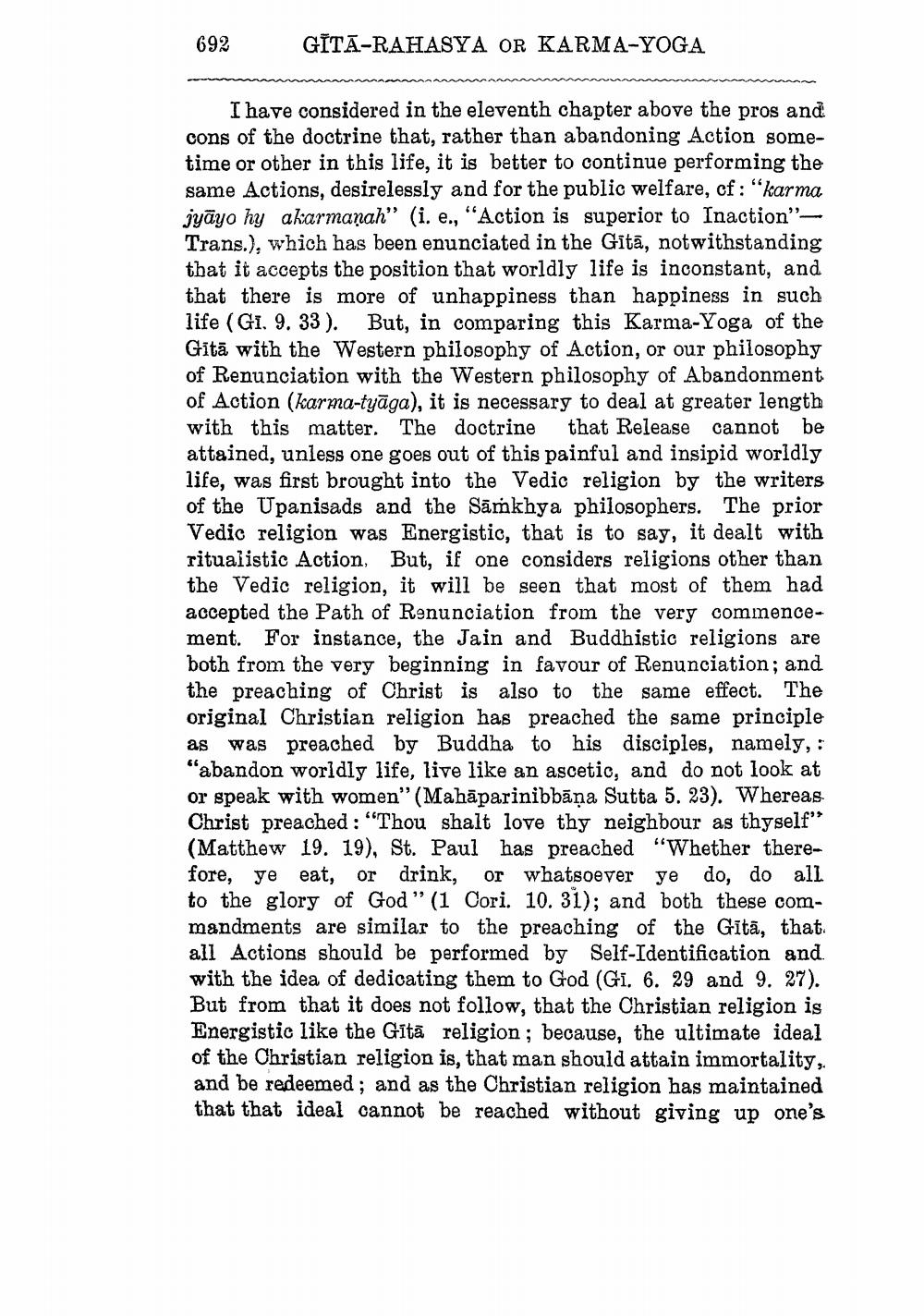________________
692
GĪTĀ-RAHASYA OR KARMA-YOGA
I have considered in the eleventh chapter above the pros and cons of the doctrine that, rather than abandoning Action sometime or other in this life, it is better to continue performing the same Actions, desirelessly and for the public welfare, of: "karma jyāyo hy akarmaṇah" (i. e., "Action is superior to Inaction"Trans.), which has been enunciated in the Gītā, notwithstanding that it accepts the position that worldly life is inconstant, and that there is more of unhappiness than happiness in such life (GI. 9. 33). But, in comparing this Karma-Yoga of the Gītā with the Western philosophy of Action, or our philosophy of Renunciation with the Western philosophy of Abandonment of Action (karma-tyāga), it is necessary to deal at greater length with this matter. The doctrine that Release cannot be attained, unless one goes out of this painful and insipid worldly life, was first brought into the Vedic religion by the writers of the Upanisads and the Samkhya philosophers. The prior Vedic religion was Energistic, that is to say, it dealt with ritualistic Action, But, if one considers religions other than the Vedic religion, it will be seen that most of them had accepted the Path of Renunciation from the very commencement. For instance, the Jain and Buddhistic religions are both from the very beginning in favour of Renunciation; and the preaching of Christ is also to the same effect. The original Christian religion has preached the same principle as was preached by Buddha to his disciples, namely,: "abandon worldly life, live like an ascetic, and do not look at or speak with women" (Mahāparinibbāna Sutta 5. 23). Whereas Christ preached : "Thou shalt love thy neighbour as thyself" (Matthew 19. 19), St. Paul has preached "Whether therefore, ye eat, or drink, or whatsoever ge do, do all to the glory of God" (1 Cori. 10. 31); and both these commandments are similar to the preaching of the Gītā, that. all Actions should be performed by Self-Identification and with the idea of dedicating them to God (Gi. 6. 29 and 9. 27). But from that it does not follow, that the Christian religion is Energistic like the Gitā religion ; because, the ultimate ideal of the Christian religion is, that man should attain immortality, and be redeemed ; and as the Christian religion has maintained that that ideal cannot be reached without giving up one's




